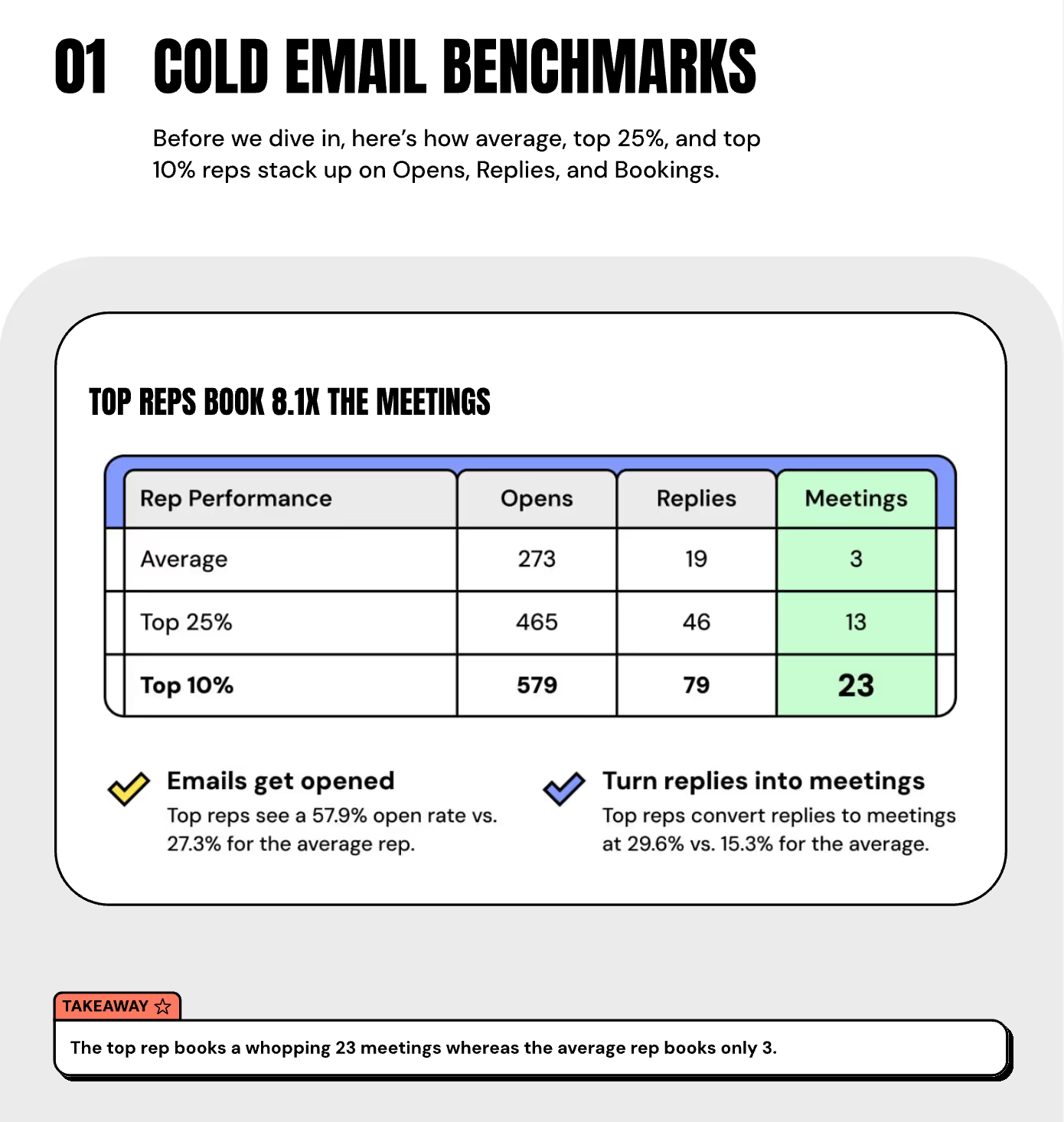The avg. rep has to send 344 cold emails to land ONE meeting. To put that into perspective, you have better odds of getting into Harvard.
Cold email doesn’t have an easy button anymore.
Many reps either:
- Spend hours personalizing emails (because LinkedIn influencers told them to), and get little to nothing in return.
- Or mass blast, cross their fingers, and hope for the best.
So does cold email even work anymore? Let’s pretend two reps send 1000 cold emails…
We analyzed 85M+ cold emails with Gong to figure out what would happen.
Spoiler alert: The top reps literally book 8x the meetings versus the average rep.
So today, we're breaking down the benchmarks and exactly how top reps are winning in cold email step-by-step:
- Meeting Rates (and what to say to get a positive reply)
- Reply Rates (and how to make your emails easy to reply to)
- Open Rates (and what to put in your subject line)
I run Outbound Squad, a sales training firm that’s trained reps at Gong, Shopify, Zoom, Rippling, and more.
We care a lot about what top performers are doing that can be scaled across the rest of the org.
Let’s dig in.
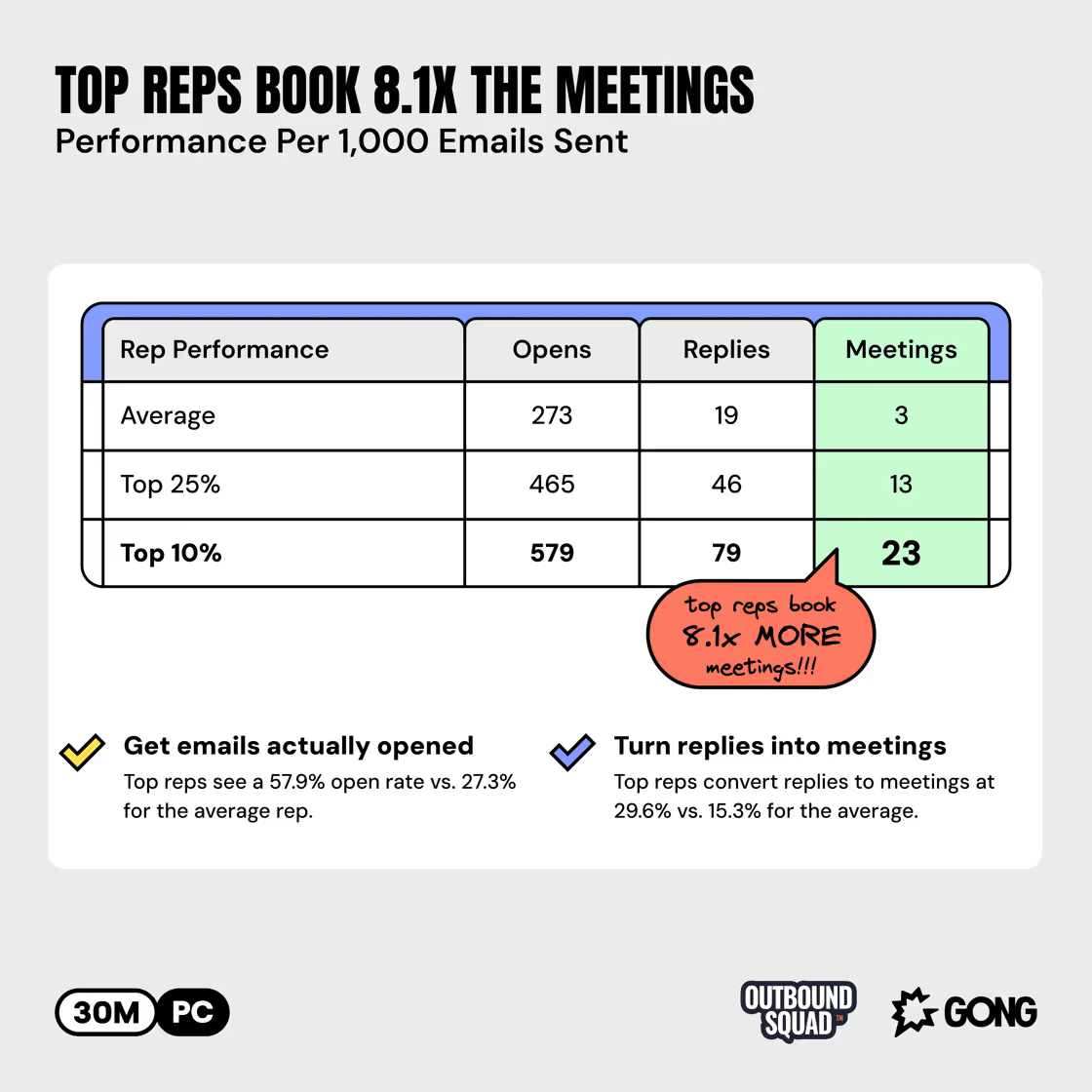
Meetings Booked: Top Reps Book 8.1x The Meetings
Top performers book 8.1x more meetings than avg. performers. The delta between top vs. avg. performers was much larger than we expected.
This proved that cold email isn’t dead. But it certainly sucks if you’re bad.
And the payoff is huge if you can move from the top quartile to the upper 10%.
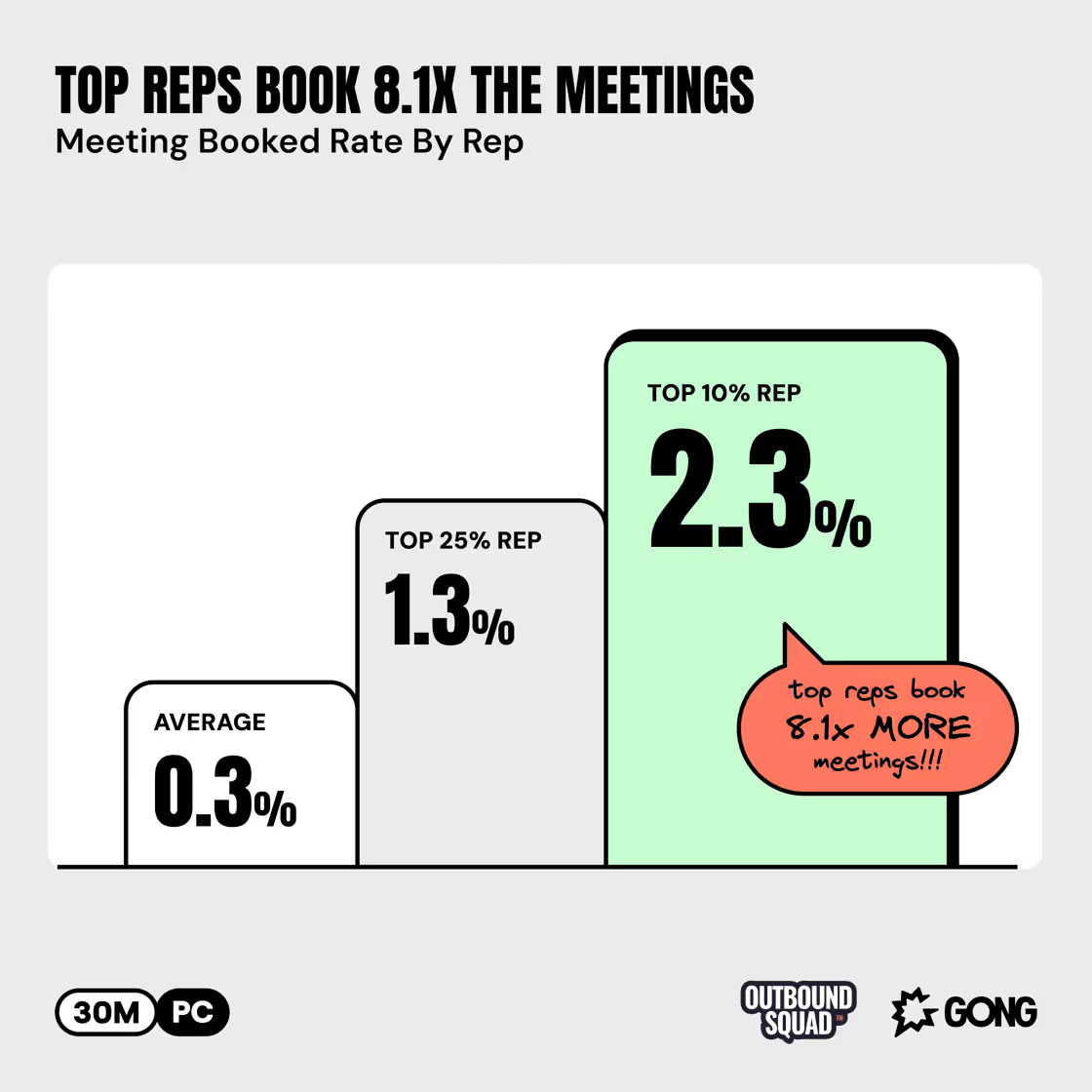
How to make it tactical: Stop pitching in cold emails (it drops reply rates by up to 57%)
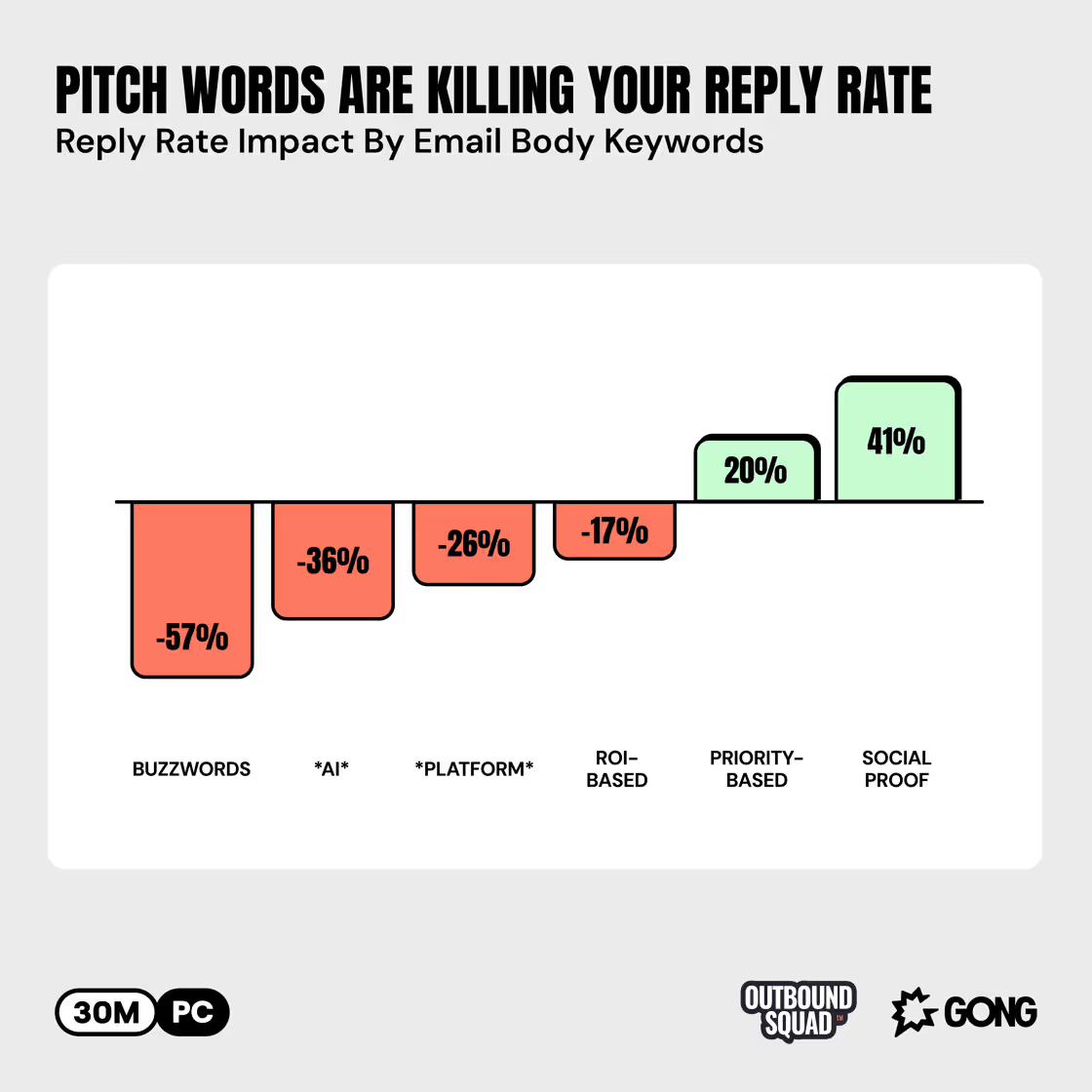
At Outbound Squad, we’ve trained over 10,000 reps in the last 8 years. Most reps know they should talk less about their solution, and more about problems they solve.
But rarely is this reflected in the copy of their cold emails.
Gong’s data is pretty conclusive: Pitching reduces reply rates by as much as 57%.
- Avoid industry buzzwords. TCO and MTTR sound really cool, but you’re not fooling anyone. Keep the language simple.
- Do not talk about AI. It’s THE topic everyone’s talking about right now. But you and all your competitors are saying the same thing.
- Don’t pitch the platform. Or anything else that sounds like “all in one” or “single pane of glass.”
- Avoid ROI language. Everyone’s promising a 10x return. Avoid justifying the ROI of your solution.
What to do instead: Use your customer’s language.
- Priority-based language. Use specific words and phrases your buyer uses when talking about their goals, priorities, OKRs, problems, etc.
- Social proof. Share relevant, specific logos or industries similar to the prospect’s. The more specific, the better.
Here’s an example of a top-performing email:
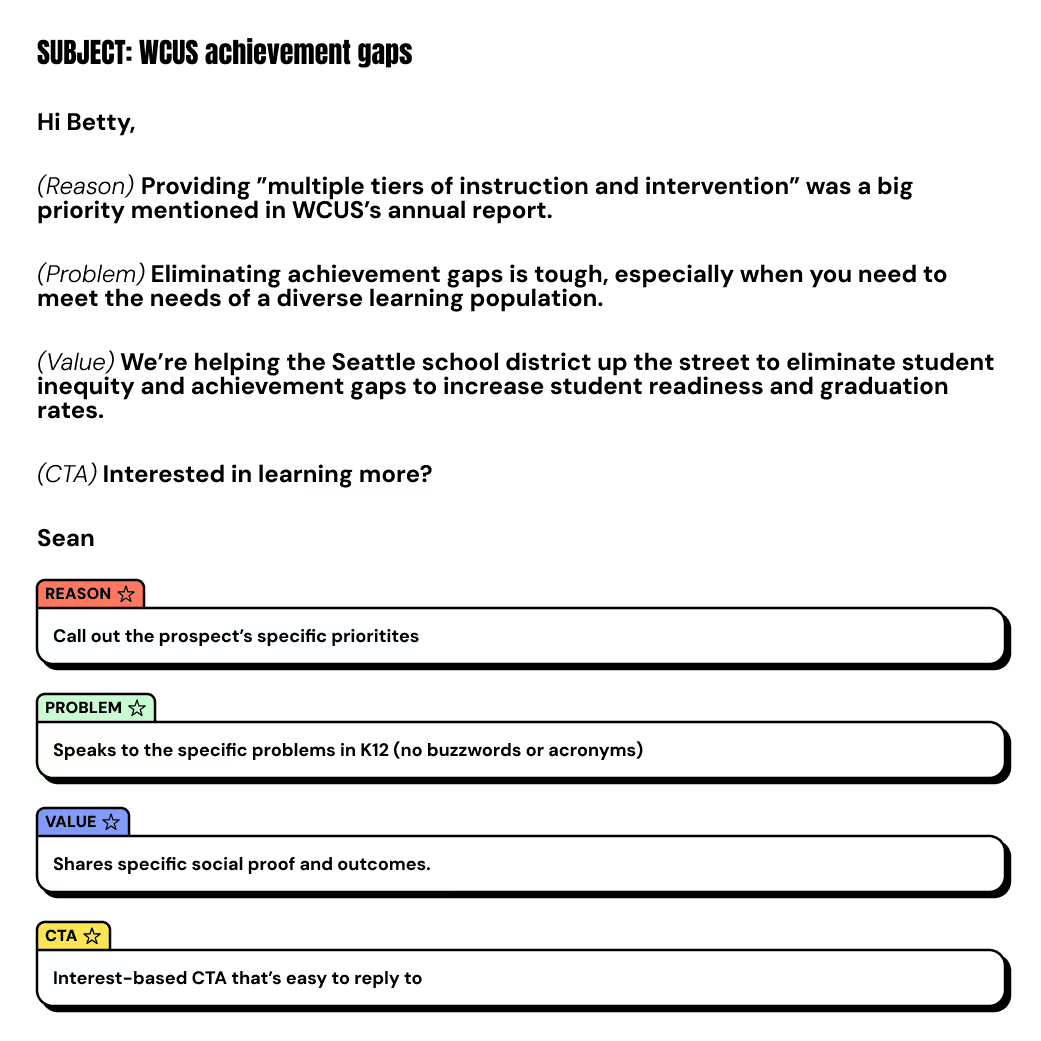
Next week, in part 2 of this 4-part series, I’ll break down the Reply Method. Our data-backed cold email framework for double-digit reply rates.
Reply Rate: Top reps get 4.2x the replies
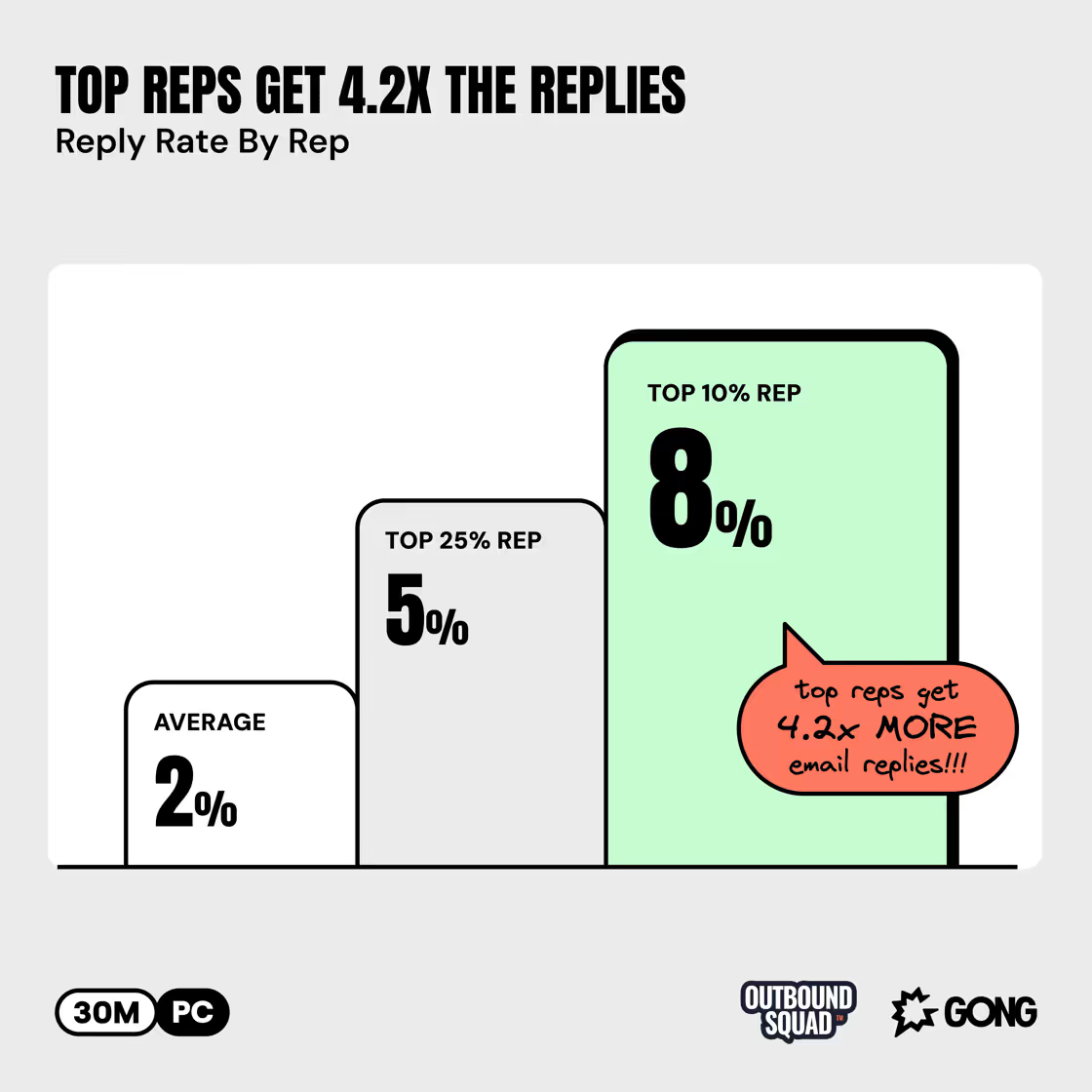
Top reps get 4.2x more replies than avg. reps. Honestly, the overall reply rate for top reps was lower than anticipated. 10%+ is the gold standard in our work at Outbound Squad.
This shows how hard it is to get replies right now.
How to make it tactical: Shorter emails = More replies
Imagine opening up Netflix. Instead of seeing a curated feed of shows/movies, you see the entire catalogue in alphabetical order.
You’d cancel your membership immediately.
Cognitive load theory states that the easier it is to take action, the more likely you are to take said action.
How does this apply to cold emails?
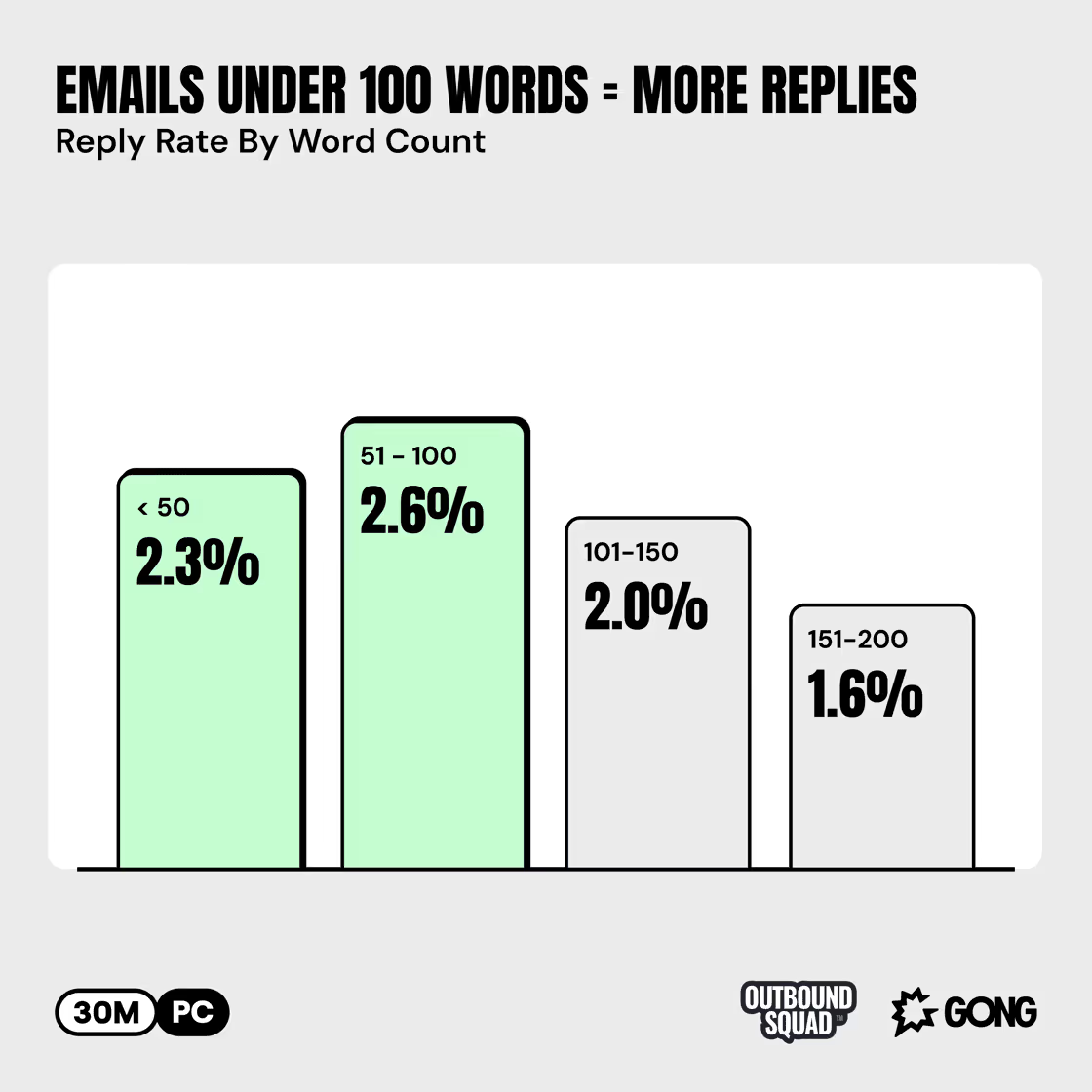
Shorter emails have a higher reply rate. The ideal word count is under 100 words.
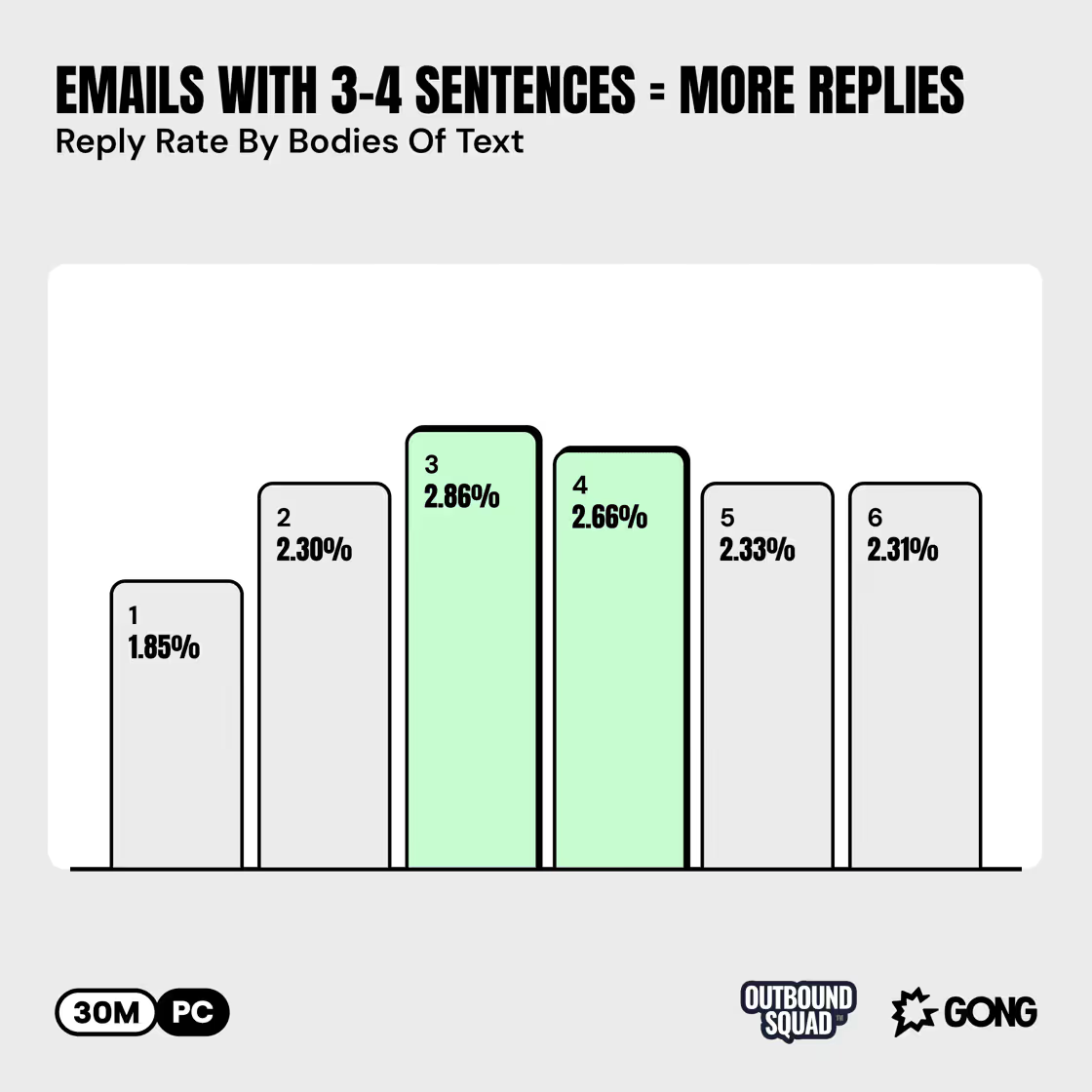
The highest reply rates come from emails with 3-4 sentences.
Let’s look at an example.
Long Email Example
This first email isn’t terrible. It’s personalized, speaks to problems/priorities, shares social proof, and has a decent call to action.
But it’s 9 sentences and 250+ words.
WAY too long.

Short Email Example
This email clocks in at right around 50 words. And it’s 4 sentences long.
Strong reason at the top, succinct problem statement, great social proof, strong call to action.

Open Rate: The top reps get 2.1x the opens:
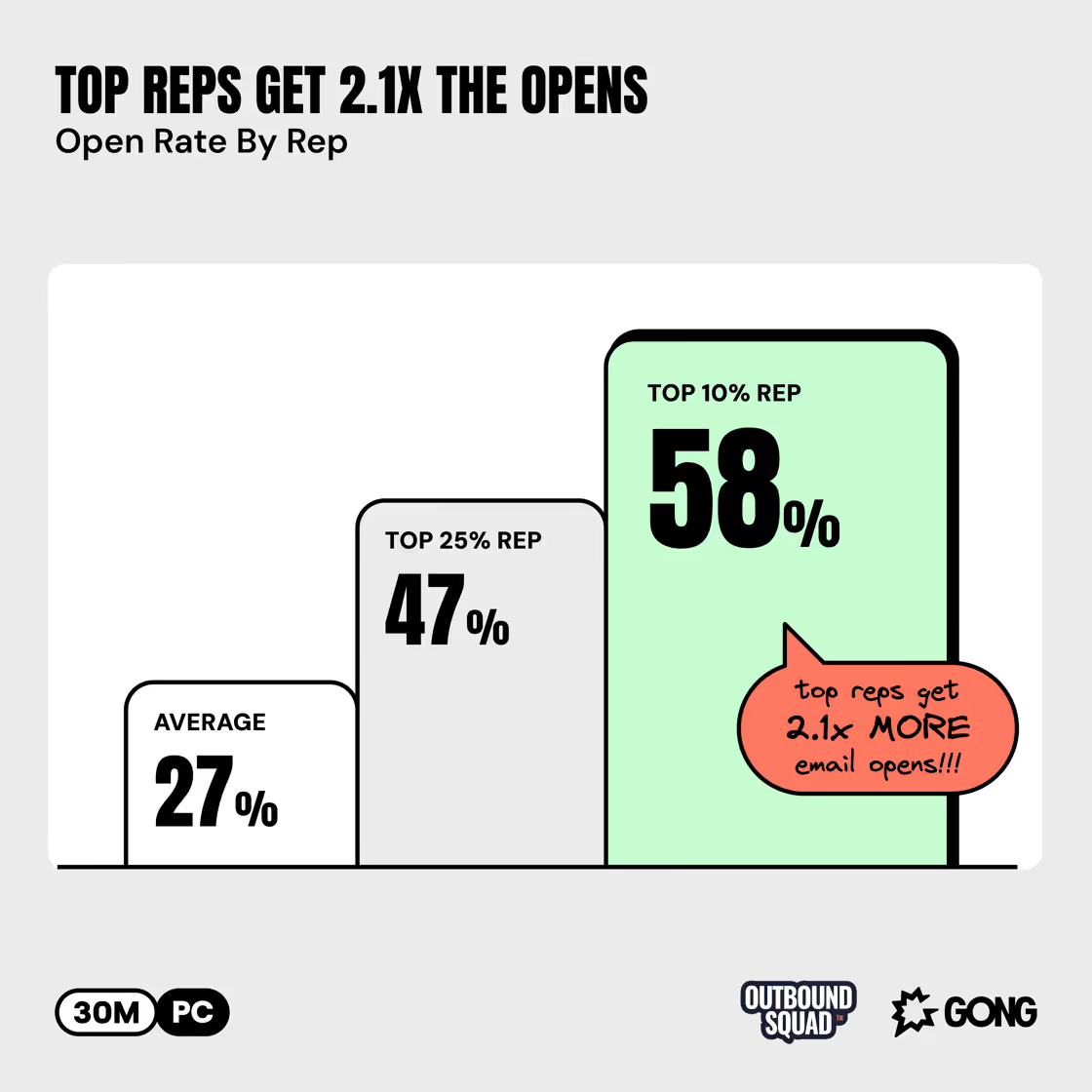
Top performers have 2.1x higher open rates than avg. reps. Open rates are a controversial metric in cold email right now.
Those opens could be the prospect’s spam filters. But, the data shows that top reps are getting way more opens.
How to make it tactical: Buzzwords & numbers reduce open rates by up to 17.9%
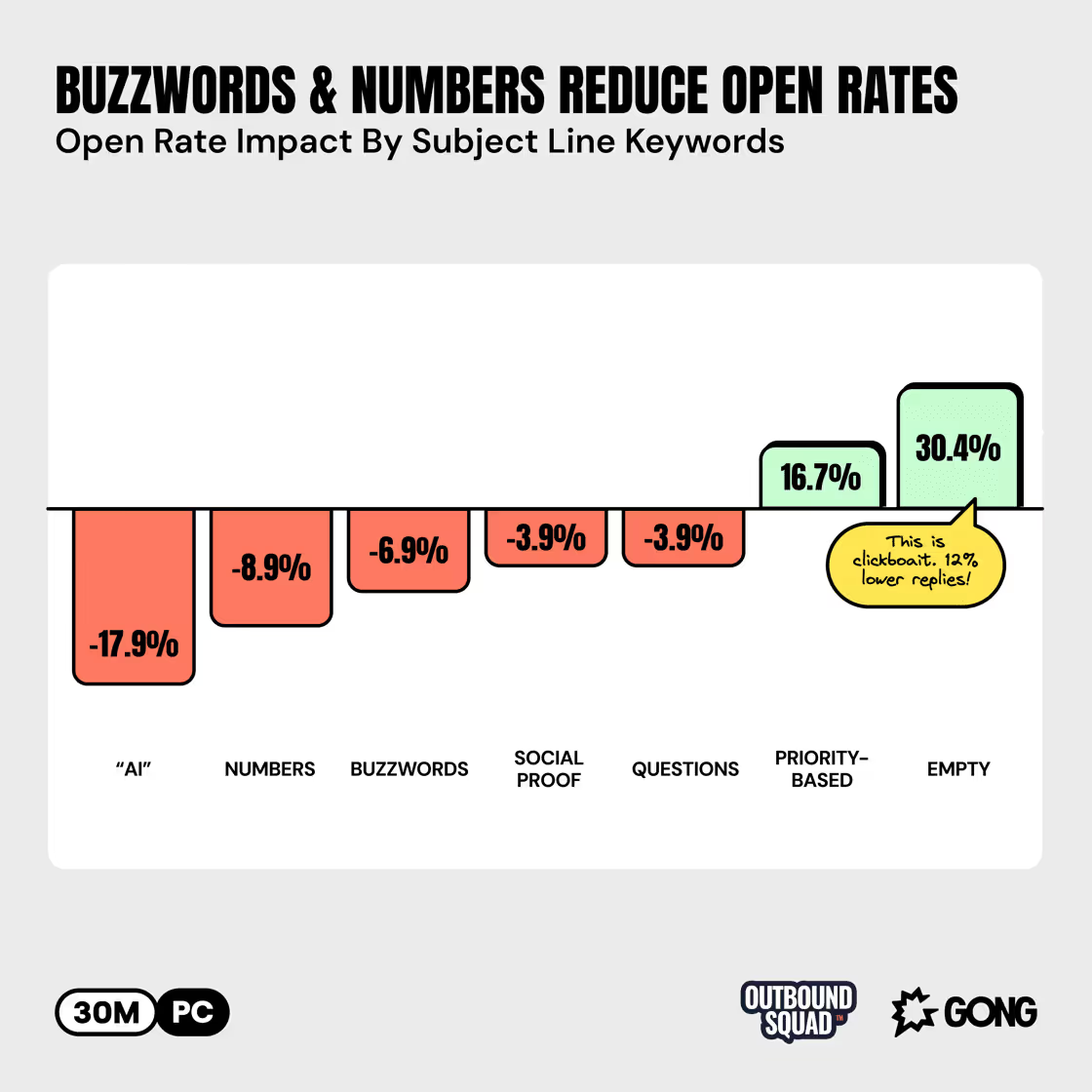
Same principles we shared before with the body of the cold email.
AVOID selling in the subject line. There’s no need for it.
- Avoid marketing language. Don’t talk about AI or use industry buzzwords.
- Avoid numbers & questions. “What if you could 10x your pipeline?” looks like a marketing intern got hold of your keyboard.
- Social proof. This one surprised us. Social proof works great in the body of the email, but not in the subject line.
What to do instead: Make the subject line priority-based. Use the prospect’s language.
- Industry-wide problems all prospects are likely to experience
- Industry trends and what everyone’s talking about
- Company-wide initiatives
- Exec leadership quotes
- Shared connections or people on their team
- Short, one-word subject lines designed to pattern interrupt
- Competitor shares
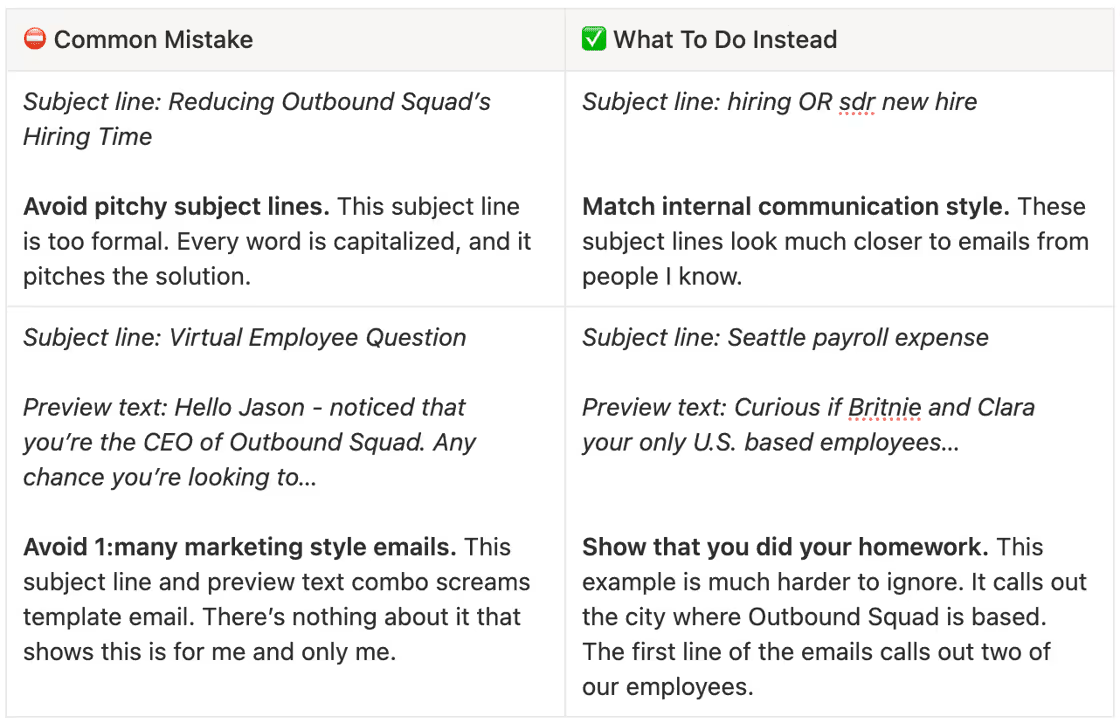
The third part of this series is all about subject lines. I’ll do a deep-dive with 7 subject line frameworks you can use to drive 50%+ open rates.
The Verdict: Cold email is harder, but the top reps still book meetings every week.
You can’t hit “go” on automated emails anymore and expect replies.
The data shows that it pays to be great:
- Top 25% reps land 4.3x more meetings than avg. reps
- Top 10% reps land 8.1x more meetings than avg. reps
Want more? The Ultimate Cold Email Data Report breaks down 20+ data-backed email insights that separate the top reps from the pack.



